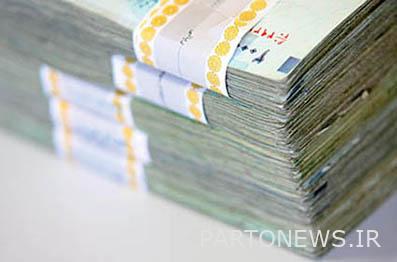Bank of Iran Zamin Deferred Receivables decreased

The increase in non-current facilities for banks is not just an alarm, and its long-term growth will take away the bank’s ability to compete and lead to bankruptcy; Bank Iran Zamin has been able to reduce the volume of its non-current facilities in a short period of time due to business developments and good management.
One of the problems of the banking system in the Iranian economy is the increase in the volume of non-current facilities (delinquent receivables). The existence of non-current receivables has many negative effects on banks and financial institutions and can even push them to the brink of bankruptcy and lead to many overt and covert crises.
Failure to do so, while rendering a significant portion of banks’ assets inefficient each year, also has a direct impact on the performance and profitability of such institutions in the form of the cost of doubtful receivables. Ultimately, the continuation of this situation puts banks at risk and, at various levels, drastically reduces their credit rating and shakes their position.
Its direct effects are the reduction of the bank’s earnings per share and the decrease of the stock value in the stock trading market, ie the reduction of the wealth of its shareholders. It will also indirectly affect people’s attitudes towards the bank and reduce their level of trust. Paying attention to this issue causes the managers of banks and credit institutions to pay special attention to the issue of risk and how to manage it in all possible dimensions (liquidity, credit, operations, etc.).
Therefore, paying attention to the amount of non-current receivables of banks and the awareness of officials on how to reduce it, can be very effective and efficient in order to clarify and improve the conditions governing the monetary and banking system of the country. According to the Central Bank’s instructions on asset classification, the granted facilities are classified into four categories according to quality as follows. The quality of each item of the facility is evaluated based on three factors (time, customer financial status and industry or field of activity). 1- Current category: Payment of principal and interest on the facility or repayment of installments is made at maturity or is paid within 2 months from the maturity of the contract installments. 2- Past due date: More than 2 months have passed since the due date of the principal and interest of the facility or the date of termination of installment repayment, but the delay in debt repayment has not exceeded 6 months. 3- Deferred category: The principal and interest of the facility that has passed more than 6 months and less than 18 months from the due date or from the date of interruption of repayment of installments and the customer has not yet taken action to repay the bank’s receivables. 4- Suspicious category: the total amount of principal and interest of the facility that has passed more than 18 months from the due date or from the date of interruption of repayment of their installments and the customer has not yet taken any action to repay his debt.
Also, the bank’s claims for letters of credit and guarantees paid, when not received within 2 months, will be transferred directly to the doubtful class. The second point is that the part of the banks’ receivables that can not be collected regardless of the due date due to bankruptcy or other reasons, with the approval of the bank’s board of directors, are considered as burned receivables and are deducted from the accounts.
However, if for any reason it is determined that the balance of the mentioned facilities remains in the bank accounts, it is necessary to include the mentioned balance in the suspicious category. The increase in bank overdue receivables has very negative consequences on the body of the country’s economy, the effects of these consequences can be seen in three parts: 1- The effect of increasing bank receivables on reducing public confidence in the banking network (depositors, facility applicants and shareholders) 2- Effects Bad increase in bank receivables on the country’s economy due to reduced liquidity (increased unemployment, closure of production units and reduced GDP and negative effects on the capital market) 3- Consequences of increased overdue receivables on the banking network, including: Decrease in banks ‘liquidity following the outflow and reduction of allocable resources, decrease in banks’ profitability, decrease in banks ‘market value and stock prices, increase in banks’ risk and decrease, decrease in access to and utilization of international resources, including unrealized revenues to definite revenues. In recent years, Bank Iran Zamin has made many efforts to reduce non-current receivables, and studies show that these efforts have achieved the desired results.
According to the Central Bank, from the winter of 1997 to the end of 1399, the ratio of non-current facilities to total facilities (in Rials and foreign currency) has decreased from 10% to 8.5%. This rate is about 5.2% for Bank Iran-Zamin.

